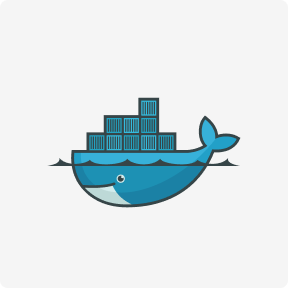Possible solutions are offered and examined to find the best fit for the project’s end aim or goals. This has recently been increased to seven SDLC methodologies or phases. Developers can now describe clearer and more effective actions to achieve specific goals via these newly added phases. Whether a system is technical or not, it can gain from the SDLC procedure. A system is basically some sort of information technology like apparatus or freeware. Executives of projects and programs often take part in SDLC, alongside system and system programmers, architect coders, and even prospective users.

The NIST SDLC integrates risk management activities through the application of the NIST RMF. Security is critical – especially when the purpose of the system development life cycle is to create software. Software is the most-attacked part of the security perimeter, and more than half of all successful security breaches begin with an attack on an application. Each company will have their own defined best practices for the various stages of development. For example, testing may involve a defined number of end users and use case scenarios in order to be deemed successful, and maintenance may include quarterly, mandatory system upgrades.
What is a system development life cycle security testing provider?
These are just a few examples of companies using Agile to deliver products and services quickly. This methodology has become the preferred model for software development in today’s digital world. These are the main six phases of the System Development Life Cycle, and it’s an iterative process for each project.

The spiral model goes through the planning, design, build and test phases over and over, with gradual improvements at each pass. However, unlike traditional software development that addresses security as a separate stage, SDLC addresses security every step of the way through DevSecOps practices. ” This phase of the SDLC starts by turning the software specifications into a design plan called the Design Specification. All stakeholders then review this plan and offer feedback and suggestions.
Stage 6: Implement and launch the product.
Listen to users and iterate because through user feedback surveys and guidance you can start again at phase one scoping new requirements. The founders spent time on application and website design knowing that if they planned correctly the actual architecting and design stage would be smoother. A tremendous amount of time was spent on the planning phase of the app’s development.
The security issues for a development must be identified by a formal risk analysis. The second theme includes ways to determine the data necessary to produce the logical requirements specified by the organization. Stackify’s APM tools are used by thousands of .NET, Java, PHP, Node.js, Python, & Ruby developers all over the world. Want to improve application quality and monitor application performance at every stage of the SDLC? Try out Stackify’s Retrace tool for free and experience how it can help your organization at producing higher-quality software.
Stage 5: Implement
A software life cycle model (also termed process model) is a pictorial and diagrammatic representation of the software life cycle. A life cycle model represents all the methods required to make a software product transit through its life cycle stages. It also captures the structure in which these methods are to be undertaken. At Intellectsoft, we know how important an effective project management strategy is.
SDLC works by lowering the cost of software development while simultaneously improving quality and shortening production time. SDLC achieves these apparently divergent goals by following a plan that removes the typical pitfalls of software development projects. The system development life cycle or SDLC is a project management model used to outline, design, develop, test, and deploy an information system or software product.
Stage 2: Analyze
The baseline may include start date, end date, phase/stage duration, and budget data. These baseline assists the project manager in monitoring performance. The software development life cycle (SDLC) is the process of planning, writing, modifying, and maintaining software.

The detail design and development is responsible for producing the product, process and material specifications and may result in substantial changes to the development specification. In other words, a life cycle model maps the various activities performed on a software product from its inception to retirement. Different life cycle models may plan the necessary development activities to phases in different ways. Thus, no element which life cycle model is followed, the essential activities are contained in all life cycle models though the action may be carried out in distinct orders in different life cycle models. During any life cycle stage, more than one activity may also be carried out. In this stage, the problem or pain the software targets is clearly defined.
The stages of SDLC are as follows:
However, the SDLC is also a part of the holistic product development framework. A configuration management system shall be implemented during development and implementation. The Forensic Laboratory configuration management process is defined in Chapter 7, Section 7.4.5. The IT Manager, and other stakeholders as appropriate, shall review the completion of major phases of the what is the system development life cycle system and provide formal sign-offs that make them personally liable and accountable for the development. Any Forensic Laboratory employee that is involved in software development shall have the appropriate training, experience, and qualifications for the required development work. The spiral model is suitable for large and complex projects that require frequent changes.
- The development team collects requirements from several stakeholders such as customers, internal and external experts, and managers to create a software requirement specification document.
- Then based on the assessment, the software may be released as it is or with suggested enhancement in the object segment.
- In systems design, functions and operations are described in detail, including screen layouts, business rules, process diagrams, and other documentation.
- There, it is depicted as consisting of three phases—system definition, physical design, and implementation.
- This content has been made available for informational purposes only.
- Also, make sure you have proper guidelines in place about the code style and practices.
- This includes the first system prototype drafts, market research, and an evaluation of competitors.
Once the requirement analysis is done, the next stage is to certainly represent and document the software requirements and get them accepted from the project stakeholders. The end-user’s requirements should be determined and documented, what their expectations are for the system, and how it will perform. A feasibility study will be made for the project as well, involving determining whether it’s organizationally, economically, socially, technologically feasible. It’s very important to maintain strong communication level with the clients to make sure you have a clear vision of the finished product and its function. Alternative development paradigms, such as rapid application development (RAD), may be suitable for some projects but typically carry limitations and should be considered carefully.
Integration and Implementation Stage – How Will We Use It?
These days, many people are successfully pivoting or switching their careers from education, the service industry, and more to coding and development. They may complete bootcamps or earn professional certificates online such as IBM’s Full Stack Cloud Developer. System Design is a critical stage in the SDLC, where the requirements gathered during the Analysis phase are translated into a detailed technical plan. It involves designing the system’s architecture, database structure, and user interface, and defining system components. The Design stage lays the foundation for the subsequent development and implementation phases. The Iterative model incorporates a series of smaller “waterfalls,” where manageable portions of code are carefully analyzed, tested, and delivered through repeating development cycles.
